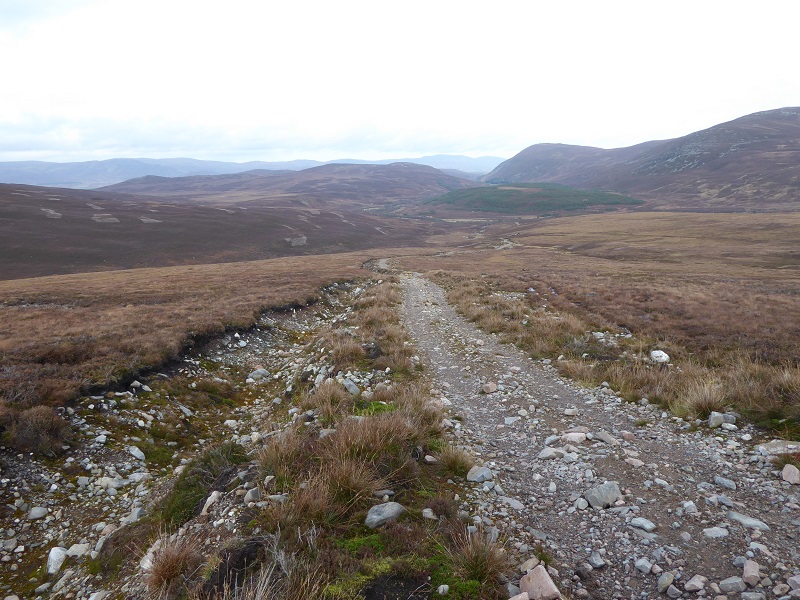
The Cairngorms National Park Authority meeting today has a fairly limited agenda (see here): an informative report from their Chief Executive on what has been going on; a four year corporate plan, a one year operational plan together, somewhat strangely, with a (welcome) paper on not paying Board Members who fail to attend meetings; a communications and engagement strategy and a paper seeking approval to set up a Cairngorms Upland Advisory Forum/Group (somewhat confusingly the paper starts with a Forum and ends up with a Group but I take the two terms to be interchangeable). This post takes a look at the latter proposal within the context of what other Board Papers tell us about the CNPA’s plans for the uplands.
The proposed Cairngorms Uplands Advisory Group
I believe the proposal to set up an Upland Advisory Forum/Group to replace the Cairngorms Deer Advisory Group is welcome because it could help enable the CNPA to take a far more robust approach to protecting wild land and landscape, rewilding, protection of native species and exploring more sustainable ways to manage the land than the current models of stalking estate and grouse moors. The problem has been that all the voluntary mechanisms, including Deer Advisory Groups, used to date to address issues in the hills have failed to work, whether these are to reduce deer numbers , reduce muirburn or protect raptors. While an upland advisory forum could enable a more holistic approach, as the paper claims, and might provide some critical “oversight” of the East Cairngorms Moorland Partnership, into which the CNPA has invested a great deal of faith (its the main vehicle proposed to change the ways grouse moors are managed), the paper is vague on details.
I believe there are three factors which will determine its success. The first is the membership. The paper suggests the core group should “comprise of representatives, practitioners and/or experts in moorland management, deer management, forestry, nature conservation, recreation, research, and farming.” This could easily end up as yet another group packed with traditional land managers, including foresters whose mission is to plant trees without any consideration of natural processes. Traditional land managers and conservationists have a totally different view of who the experts are. So, if the National Park is to put landscape and nature conservation first, as it is legally required to do, I believe it needs to invite/select onto the advisory group people who are committed to conservation being put first. That is not to say there would be simple solutions and nor would it prevent the advisory group from inviting specific interests to meetings to discuss certain issues but if this forum ends up packed with traditional land managers it will achieve nothing.
Unfortunately the CNPA list fails to include anyone to advocate for wild land or landscape, a serious omission and not a good start. But beyond adding these interests, why not think more imaginatively? Here’s some suggestions:
- OneKind – to stimulate some critical thinking on mountain hare culls
- Raptor Persecution Scotland – to help ensure the CNPA meets its objective of no more raptor persecution taking place in the National Park
- Reforesting Scotland – to help develop new ideas for sustainable use of the land
- The LINK Hill tracks group – to ensure the CNPA meets its objective of no new hill tracks in areas of open moorland
The second thing that needs to happen if the Cairngorms Uplands Advisory Group is to be a success is that there should be NO constraints on the advice it is able to give. This will be hard for the CNPA to accept because it remains wedded to a totally voluntary approach whatever the evidence. In my view however it needs to start receiving advice about how it, and its partners such as SEPA and SNH, could use their statutory powers more effectively. This could include, for example, the creation of byelaws for conservation purposes. The CNPA should also be open to lobbying Government to change the law if the Advisory Group reached the conclusion that existing laws are insufficient to address specific issues.
Third, money needs to be on the agenda and in particular how do we finance conservation and re-wilding in the National Park. I appreciate financing re-wilding sounds a contradiction in terms but unless deer numbers, which have been inflated by the way sporting estates operate, come down natural regeneration of the land will be impossible. And that needs to be paid for. The cheap way of course is to bulldoze track everywhere – as per photos above – but this in incompatible with other objectives. We therefore need to find a way of culling deer that keeps wild areas wild and that will cost money. The Advisory Group though could also advise on the potential for conservation oriented forms of land-use to contribute to the local economy and enable some forms of conservation land-use to pay for itself.
The Mountains and People Project and Drumochter
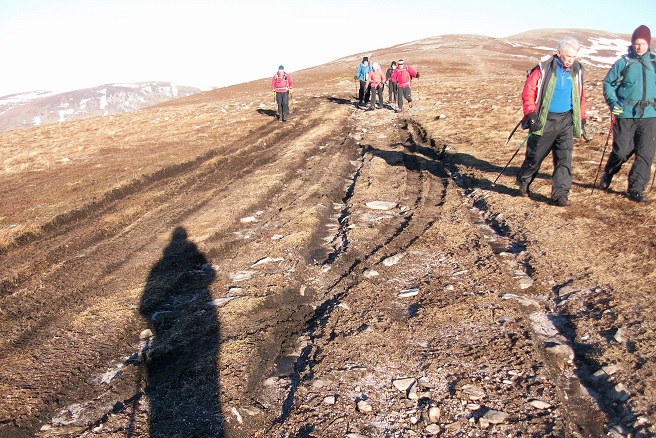
Included in Grant Moir’s Chief Executive report was a snippet which perfectly illustrates the challenges the CNPA faces in the uplands:
Mountains and People Project – The project is on schedule with some 15.2 km (37%) of the Cairngorms Mountain paths identified upgraded. The allocation of paths in Drumochter needs revised because of ongoing vehicle use: OATS [Outdoor Access Trust Scotland], SNH and CNPA aim to agree priorities by March 2018. The project is at the ‘half way point’ and so the outputs and legacy will be discussed at June board meeting (see also volunteering).
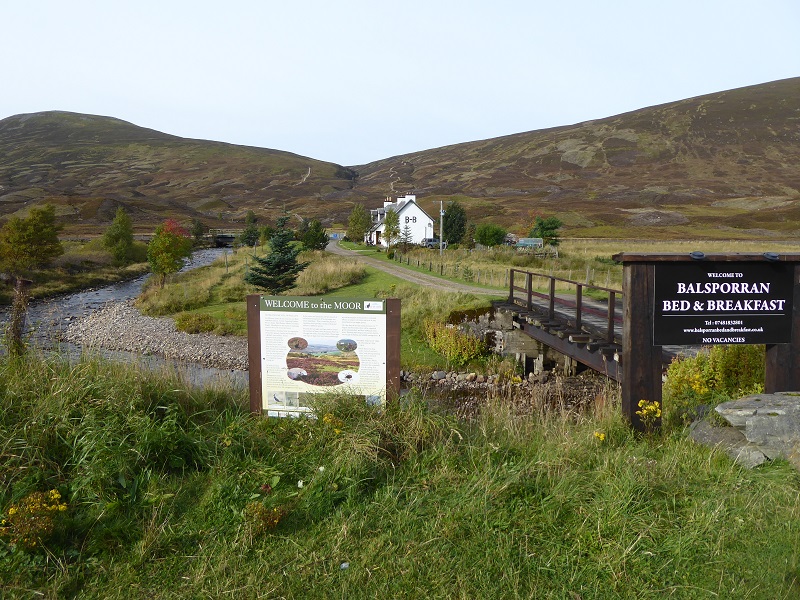
I must confess I had not realised that the west Drumochter hills were included in the Mountain and People Project, which repairs hill tracks with Heritage Lottery funding, and had to look up the paths involved:
- A’ Mharconaich from Balsporran Cottages
- Geal-charn from Balsporran Cottages
- A’ Mharconaich to Geal-charn
All these routes are seriously impacted on by unrestricted use of ATVs and unlawful track construction (and its ironic that the North Drumochter Estate has put up a Welcome to the Moor sign which wrongly advises people to keep to the path when its obliterating that same path through its use of ATVs!):
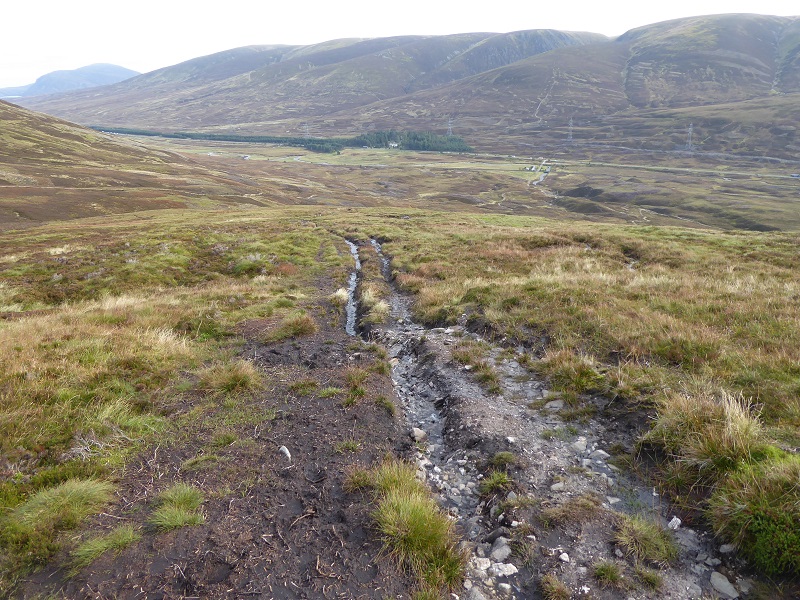
The CNPA and Outdoor Access Trust are both right on this: there is absolutely no point repairing a footpath up a hill if either vehicles are going to obliterate it or simply create a parallet track alongside. The CNPA though has avoided grasping the nettle: why not work with SNH and together use their powers to stop ATV use and make the path work possible?
The CNPA’s budgetary plans and the uplands
At present the CNPA takes a far more balanced approach than the Loch Lomond and Trossachs National Park to its responsibilities, despite having a smaller budget, with money allocated to conservation objectives. It has also been far more successful at leveraging money from elsewhere. This has resulted in continued conservation investment/expenditure in the uplands led by the CNPA in contrast to the LLTNPA (the one exception, proves the rule, the Mountains and People Project which covers the Lomond and Trossachs National Park it originated in the Cairngorms).
As an example, Grant Moir reported on Peatland restoration:
“Peatland restoration projects are ongoing. Stephen Corcoran is currently managing seven projects with a total value of £760,786 targeting restoration work over 582ha on Invercauld, Balmoral, Glenfeshie, Abernethy, Mar and Candacraig”
Its not enough but the resources raised and devoted to peatland restoration by the LLTNPA appears piddling in comparison.
However, the corporate plan shows we should be fearful for the future.
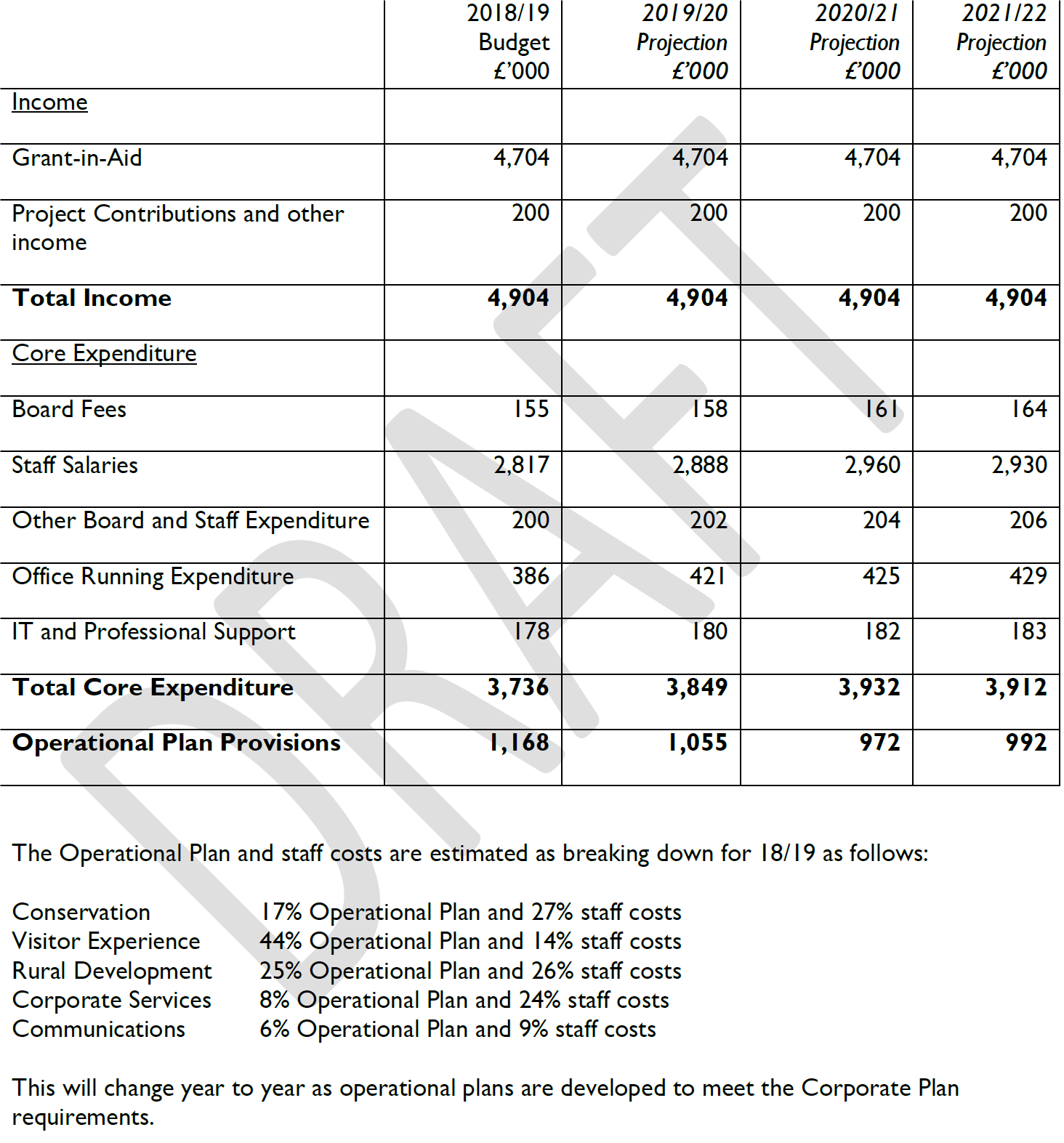
Its worth noting after yesterday’s post on how the LLTNPA’s resources have been concentrated on managing the camping byelaws, how little the CNPA spends on Visitor Experience staff (though it also grant aids some rangers)).
The worrying thing though is the bottom two lines in the chart, which project that, if Government Grant Aid does not increase, an increasing proportion of the budget will go on staff, not practical projects to benefit outdoor recreation, conservation etc. The projection makes a lot of assumptions of course, but those it makes are I believe not an accident. Under the communications strategy one of the listed outcomes is:
Cairngorms National Park partners and stakeholders work cooperatively under the recognised and valued leadership of Cairngorms National Park Authority, becoming more self-sufficient and less dependent on public sector funding.
The crucial words are at the end. The CNPA sees a reduction in public sector funding as being a good outcome. This is very disappointing and appears to shows the CNPA, just like the LLTNPA, is wedded to neo-liberal economic theory, which maintains state spending is bad, and the consequent manufacture of austerity. Just because one very very rich person in the Cairngorms, Anders Povslen, who owns Glen Feshie, is investing some of his own money in conservation, doesn’t mean it will happen elsewhere and the evidence suggests otherwise.
Without public investment, the CNPA will never achieve its objectives, it should be making that case and it could use the new Cairngorms Upland Advisory Forum/Group to do so.

I appreciate that you are trying to encourage CNPA to do better by giving it credit when it appears to be more progressive than LLTNPA, however, as you point out initiatives like the proposed Cairngorms Uplands Advisory Group are not going to achieve any real changes unless the proposed composition of the Group is radically changed. I believe the current leadership of CNPA does not have the courage or the vision to make the changes required to set CNP on a course of achieving real conservation and re-wilding – its up to CNPA to prove me wrong!